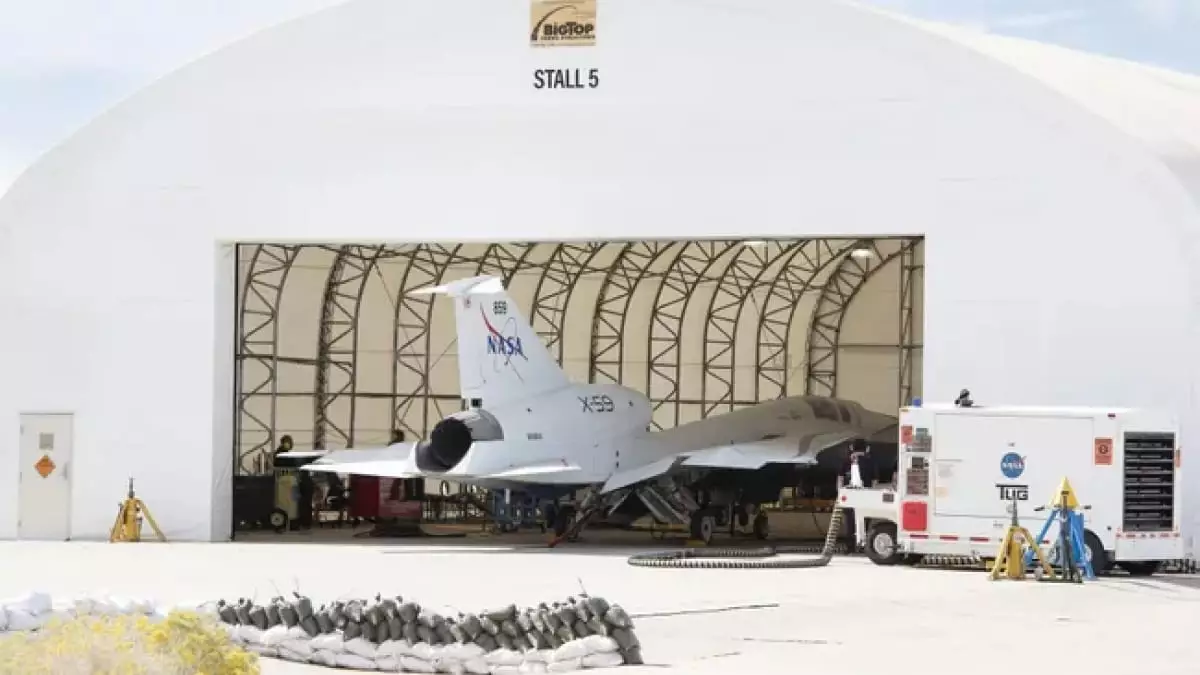NASA is venturing into an ambitious project with its experimental X-59 aircraft, engineered specifically to tackle the challenges of supersonic travel. The X-59, equipped with Quiet SuperSonic Technology (Quesst), aims to revolutionize how aircraft can navigate over populated areas while minimizing disruptive sonic booms. Following a recent milestone, where its engine was successfully ignited, the development of the X-59 is steadily moving forward, edging closer to its potential first flight.
The initiation of engine tests at Lockheed Martin’s Skunk Works in Palmdale, California, represents a crucial juncture in the development of the X-59. Since late October, these phased tests have scrutinized the aircraft’s performance and the interaction between its systems. By starting with low-speed engine operations, engineers were able to conduct thorough checks for any potential leaks, ensuring that foundational systems such as hydraulics and electrical components are fully functional. The successful powering of the X-59’s engine in its entirety allows for a comprehensive assessment of its operational readiness.
The essence of the X-59 lies not only in its engine but also in its aerodynamics. Utilizing a modified F414-GE-100 engine, derived from the U.S. Navy’s Boeing F/A-18 Super Hornet, the X-59 is designed to penetrate the skies at speeds of up to Mach 1.4, reaching altitudes of 55,000 feet. To address the challenge of sonic booms, the aircraft features a distinctive long nose—measuring over 11 meters—that helps mitigate noise, transforming the expected sonic boom into a mere ‘thump.’ This innovative design can pave the way for future regulations that would permit quieter supersonic travel over urban environments.
NASA is also pushing the boundaries of cockpit design with the X-59. The revolutionary cockpit forgoes the traditional forward-facing window in place of an “eXternal Vision System.” This cutting-edge technology allows pilots to view their surroundings through a combination of camera inputs and augmented reality overlays displayed digitally. As emphasized by Pam Melroy, NASA’s Deputy Administrator, this design addresses visibility challenges inherent in the aircraft’s unique structure while potentially enhancing pilot situational awareness.
The test program for the X-59 is set to expand, incorporating simulated flight conditions and essential taxi tests to guarantee that the aircraft operates smoothly on the ground. Once it takes to the skies, the X-59 will fly over select cities to assess the response from the public regarding its quieter sound profile. The data collected from these flights will be crucial in supporting NASA’s overarching objective: to prove that quieter supersonic travel can be a practical reality, ultimately paving the way for commercial applications.
In summation, NASA’s X-59 project embodies a significant stride towards the future of aviation. By addressing the long-standing issues of noise pollution associated with supersonic travel, the agency is not only advancing aerospace technology but also striving to align air travel with the needs of modern urban communities. As the testing progresses, the X-59 serves as a beacon of innovation, holding the promise of a quieter, more efficient future in aviation.

Leave a Reply